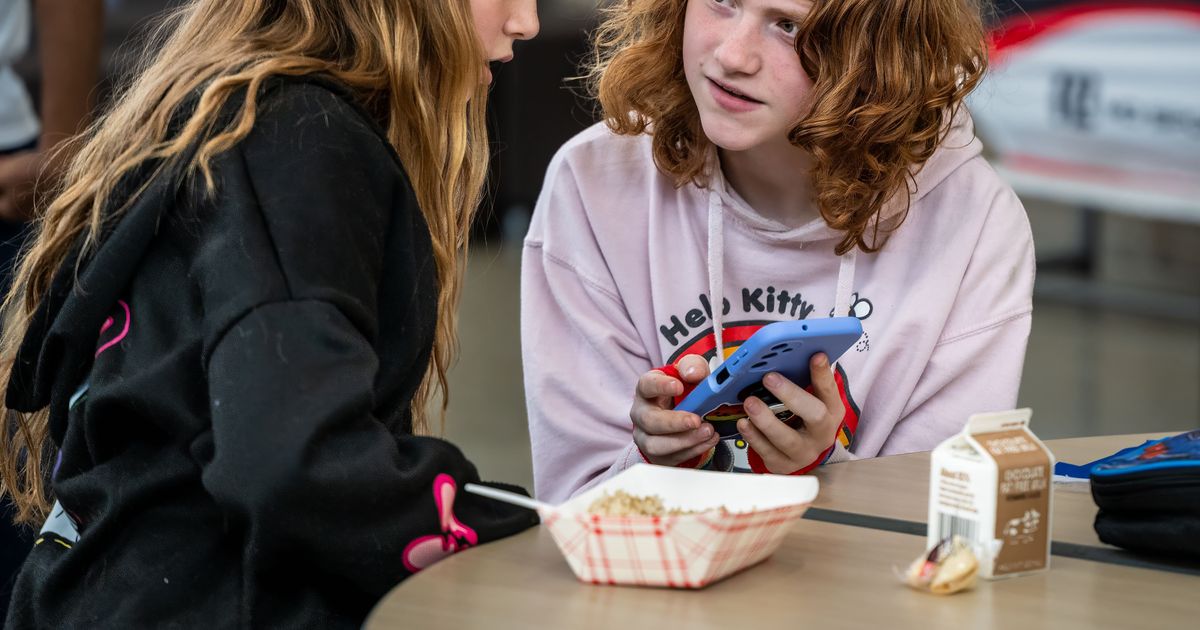Students, say goodbye to scrolling through Tiktok in trigonometry class, stop using Snapchat in social studies class—and forget about posting to your Instagram story in middle school ceramics class.
Spokane Public Schools will restrict cell phone use in their schools next school year, a sweeping move designed to help the school’s 29,000 students become more involved in their day-to-day lives and with their classmates.
“We’ve never had an adversary competing for kids’ attention like technology does,” said Superintendent Adam Swinyard. “They’re so incredibly addictive. They’re so incredibly stimulating. Kids can spend endless hours on a device at home or at school; we’ve never had to compete for our kids’ attention like this.”
To put an end to this disruptive enemy, the district is revising its cell phone policy, banning cell phone use in middle and elementary schools during school hours and in high schools except during lunch and between classes.
While much of the discussion has centered around restricting cell phone use, the policy applies to all “mobile devices,” including smartwatches, video game consoles, tablets and anything else that sends messages or plays video. It excludes school-provided laptops and medical listening devices, as well as cases where technology is needed to meet some students’ individualized education plans.
Headphones and earbuds are also not allowed unless directed by a teacher. Students of all grades often watch videos or other audio content on their Chromebooks and may still use headphones.
The first few times a student is caught using their device in violation of policy, staff will remind them of the ban and ask them to put the phone away.
After “consistent reminders of the rules,” staff confiscated the device and returned it to the student at the end of the day. If that was enough, schools called home.
“If it becomes too much and we’re talking to the same child every day, we’ll have to collect the device and return it. Then we’ll make sure we involve the parents,” Swinyard said.
Educators are given discretion in monitoring the restriction. There is no set number of violations before confiscation and no set number of confiscations before parents are notified. That’s intentional, Swinyard said, so educators can respond appropriately depending on the situation.
“It’s always important to have freedom within the structure,” Swinyard said. “We want to do the most logical thing possible while ensuring consistency across all of our schools. So we recognize the unique context and it’s important that our policies and procedures are applied accordingly where necessary.”
In case of emergencies, students have access to their phones. If someone needs to reach a student during school hours, Swinyard said they can call the office and reach their student in the same way families did before the introduction of cell phones.
When cell phones were banned during school hours, Salk Middle School staff noticed a “marked change” in students’ behavior regarding discipline, interactions and academic performance.
School board chair Nikki Otero Lockwood said she has heard from teachers who support the measure.
“The board has received emails from educators across our district requesting this change, particularly due to student engagement and distraction.”
Swinyard compared the restriction to the increasing use of bicycle helmets for safety reasons.
Spokane is leading the way in cellphone bans, but it’s not alone. Last session, lawmakers considered a bipartisan bill that would require counties to tighten their policies in the future, but the bill stalled in the short session.
The Reardan-Edwall School District, with 740 students, restricted use last year, as did the Peninsula School District on the West Side and some schools in central Washington.
“You’re seeing an evolution in the way schools are thinking about this because we’re recognizing the risks and the impacts with the intention of keeping our children as safe as possible,” Swinyard said. “I would say the stakes are really high and the impact on our children is huge and profound, and perhaps in ways that we haven’t seen on other issues for quite some time.”
Swinyard and Lockwood acknowledged that the policy will take time for students to get used to following it and that staff will have to enforce it. They hope explaining to students their rationale for banning cell phones will avoid “a million little power struggles” while teachers monitor the devices.
While both students and staff will need to adjust to the drastic policy changes, the transition is expected to be worthwhile thanks to an increasingly engaged student body and to have a lasting impact on the students themselves and the school system as a whole.
“I hope we have recognized the mental health impact and can adapt to our needs as a community when necessary and set healthy boundaries around social media and technology use,” Lockwood said. “For the next generation of children born in 10 years, we will have already established that.”

